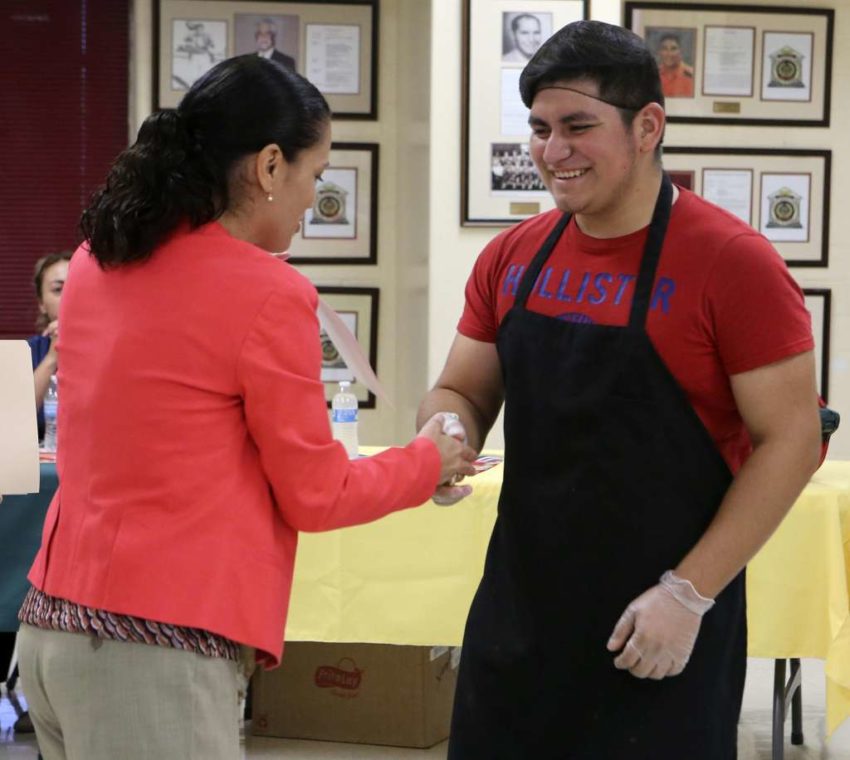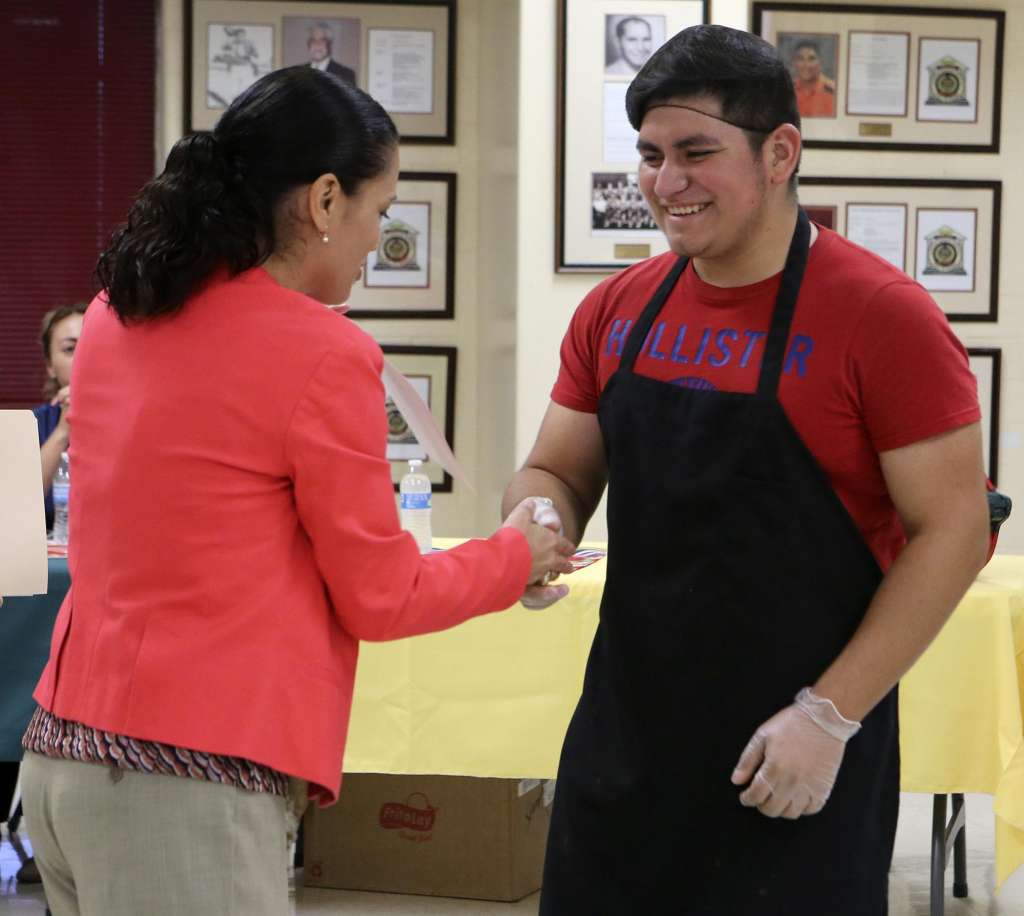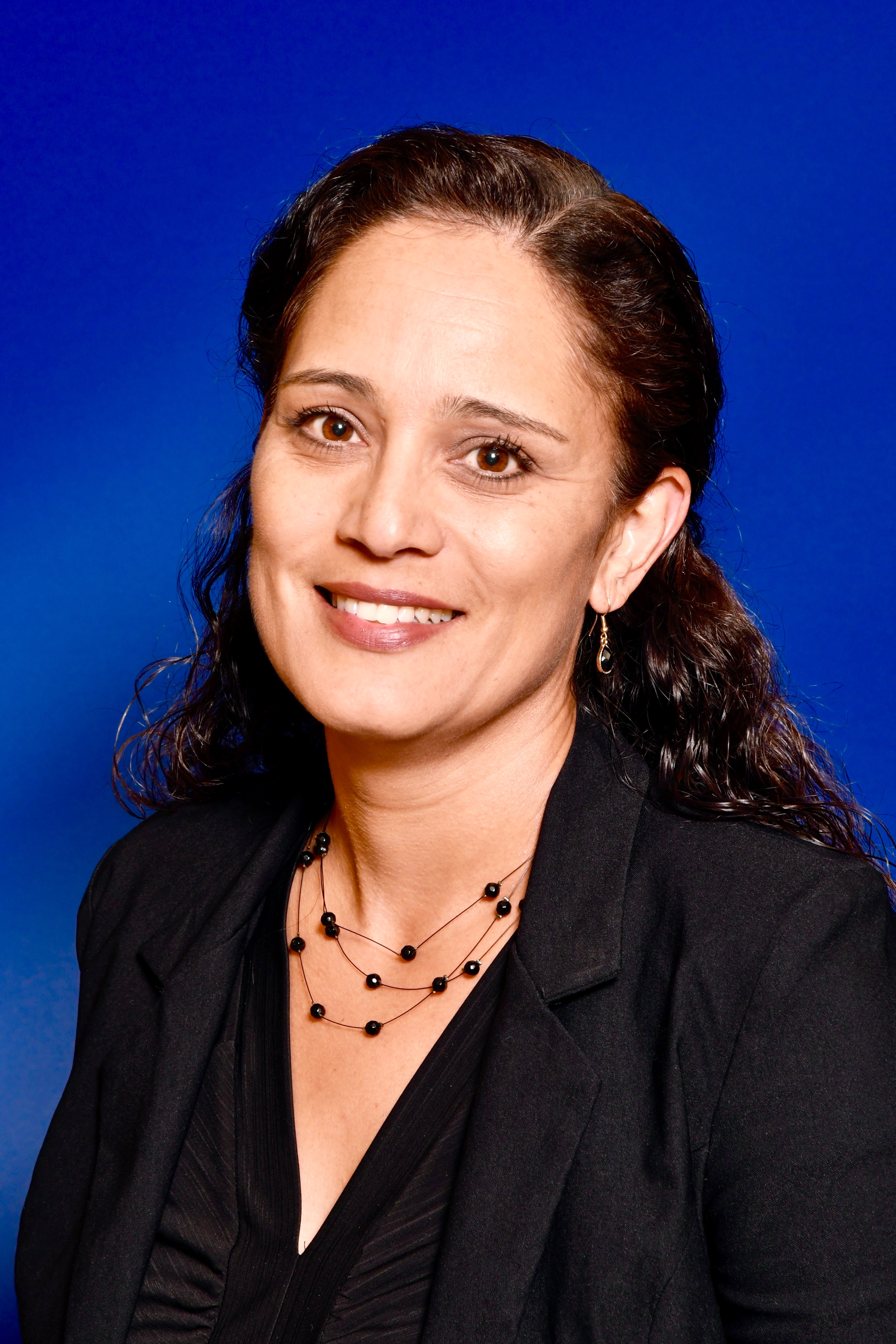
Share On Social!
Jenny Arredondo knows some San Antonio students leave school and don’t eat again until they return to school the next day.
Many students live in poverty. Some don’t know where their next meal is coming from.
Arredondo wanted to help.
Arredondo, senior executive director of child nutrition at San Antonio ISD, found a solution in Texas State Rep. Diego Bernal’s new state law. Schools now can start “school food pantries” to accept and store donated food and surplus food from the cafeteria, and distribute that leftover food to hungry students.
How could she start school food pantries at San Antonio ISD?
Food Insecurity at San Antonio ISD
U.S. Latino children and families often struggle with poverty and live in poverty stricken neighborhoods with abundant fast food but little access to healthy fruits and vegetable options, according to Salud America! research reviews.
Students at Arredondo’s San Antonio ISD (91% Latino) face food insecurity, too.
Food insecurity is the state of being without reliable access to a sufficient quantity of affordable, nutritious food.

“Food insecurity does exist and hunger doesn’t just end when the bell rings,” Arredondo said. “If we can help [students], we are going to help them.”
That’s when Arredondo learned about “school food pantries.”
Texas State Rep. Diego Bernal’s new law enables schools to set up food pantries to accept, store, and distribute donated and leftover food to hungry kids.
Read exactly how Bernal’s new law, The Student Fairness in Feeding Act, works.
But schools may not know how to start a school food pantry. Some worry they may violate health codes.
“Now that the law is passed we are finding that they know they can do something, but they are afraid of doing it wrong, so we know that that trepidation remains,” Bernal said.
Arredondo was driven to overcome any hurdles.
“We had this wonderful opportunity,” Arredondo said. “How could we not do this for our kids?”
How San Antonio ISD Started a School Food Pantry
Arredondo learned there are two main ways to start a school food pantry.
The first way is create “shared tables.”
Students can add non-perishable leftover food on one or more shared tables in the cafeteria and/or classroom. Hungry students can access the food on these tables during meal time.
The second way is adding food storage to a classroom or other site. For example, a classroom used by academic counselors also can serve as a place for food storage. A designated campus representative can distribute food from the pantry to students in need.
Arredondo started by letting her campuses know about the new rule, and to contact her if interested.
The most important step is identifying a campus contact. Each campus is required to have campus liaison and they must collaborate with a non-profit, such as the local food bank. It’s also a good idea to have the liaison have a food-handling licensing. School food pantries must follow all local and state health and safety laws.

She also gave each liaison a packet with information about what foods and drinks are able to donated and stored to meet food safety regulations.
“When you store food, it’s not like storing books or boxes,” she said.
She hosted meetings with the campus liaisons and helped with sanitation inspection and consultation with local food departments. She also helped select a spot for the food storage on each campus, which can be accessible to students and parents.
“Hunger doesn’t just stop after school.” Arredondo said.
Seven New School Food Pantries
Arredondo has helped start food pantries on 10 San Antonio ISD campuses as of April 30, 2018.
More are expected soon, she said.
“With the demographics of San Antonio ISD, implementing a food pantry was a necessity,” Arredondo said.
Other school districts are participating, too.
Northside ISD has a “Share Cart,” which allows students to put in milk, juice or packaged foods they didn’t use. Any students who want extra can grab them, but they have to eat it during school mealtime, according to a KSAT-TV report.
The program has helped the district reduce food waste.
“It was hard because kids would ask, ‘Do you mind if I can have this for my friends?’ And many times we’d have to tell them no,” Kittiya Johnson, principal at Cody Elementary, told KSAT-TV. “As soon as those items are in the [new Share Cart], they’re taken almost immediately.”
Can You Start a School Food Pantry?
You can start by using the four-step Salud America! School Food Pantry Action Pack:
- Start the Conversation. Use the model emails and talking points to talk to decision-makers about the need for School Food Pantries.
- Build Support. Use the model letter campaign, handout, emails, and presentation to build support for your pantry.
- Plan and Implement a Pantry. Use Salud America!‘s “Quick Guide” and real templates from San Antonio ISD—which implemented 10 School Food Pantries—to craft your own.
- Promote Your Pantry. Use the printable signs and shareable social media graphics to alert students, parents, and the community to your big change.
Why do this?
Because research shows children who go to school hungry are more likely to make poorer grades and have mental health problems. This makes it harder to succeed academically, socially, and emotionally.
So help kids at your school with a school food pantry today!
By The Numbers
142
Percent
Expected rise in Latino cancer cases in coming years
This success story was produced by Salud America! with support from the Robert Wood Johnson Foundation.
The stories are intended for educational and informative purposes. References to specific policymakers, individuals, schools, policies, or companies have been included solely to advance these purposes and do not constitute an endorsement, sponsorship, or recommendation. Stories are based on and told by real community members and are the opinions and views of the individuals whose stories are told. Organization and activities described were not supported by Salud America! or the Robert Wood Johnson Foundation and do not necessarily represent the views of Salud America! or the Robert Wood Johnson Foundation.



